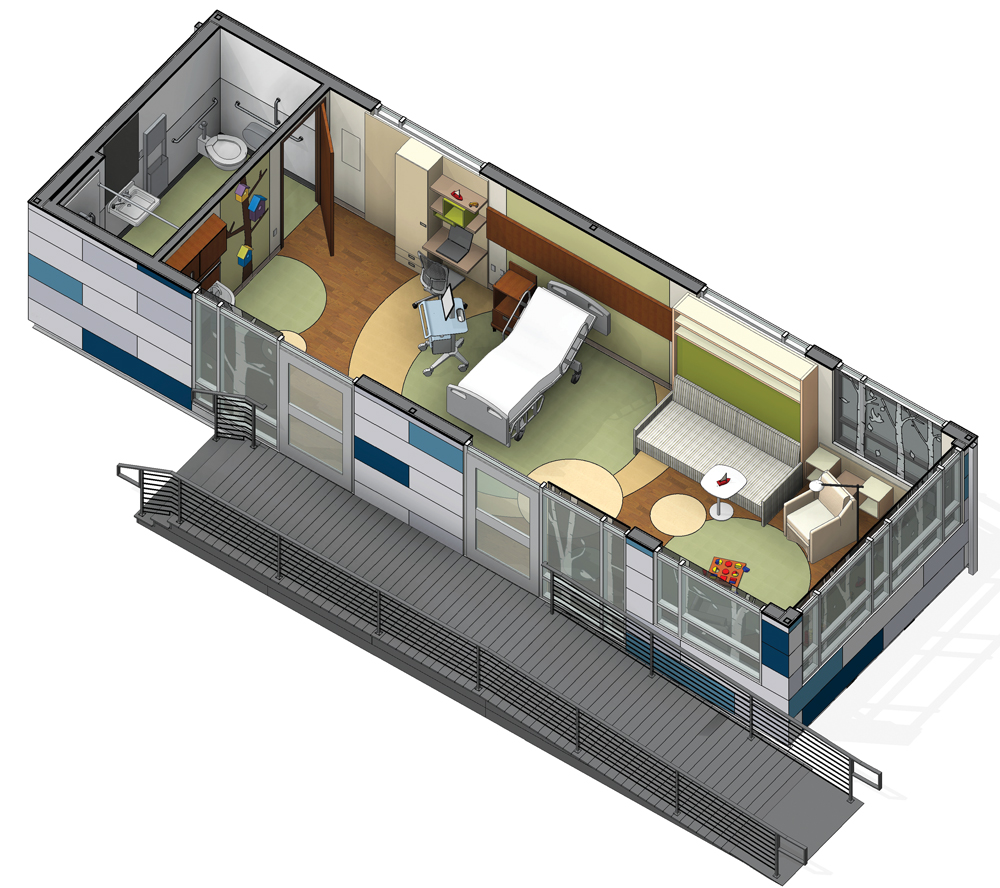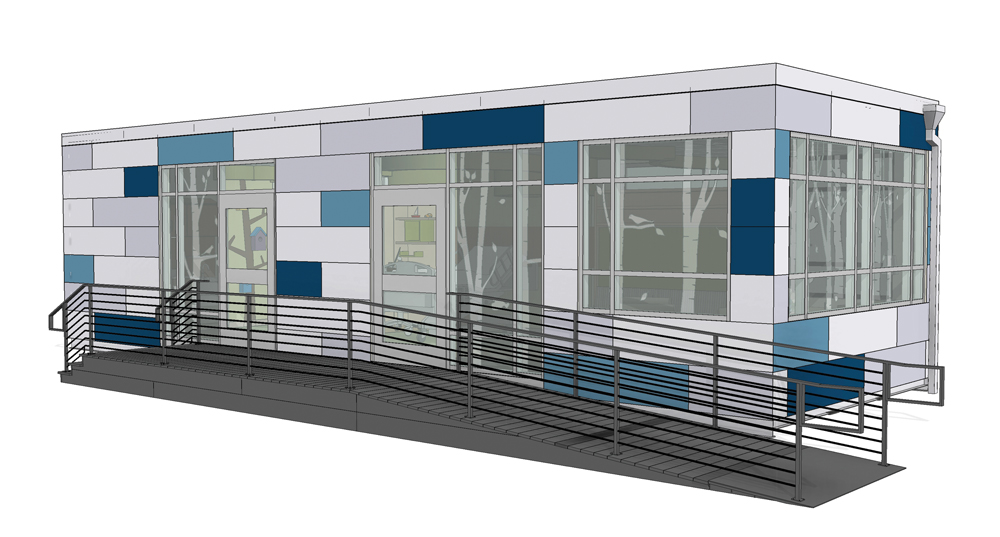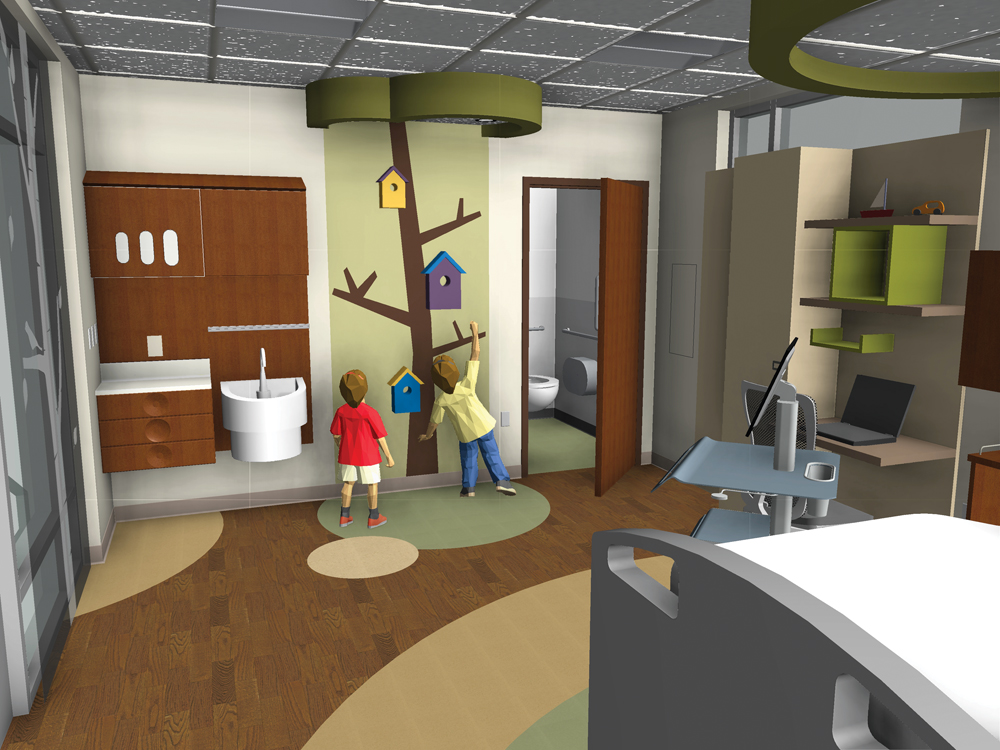The model for healthcare delivery has changed dramatically over the past 25 years or so, in part by the realization that many surgeries, treatments, and procedures can be better accommodated through the advanced technology now available in highly regulated ambulatory care centers.
This can speed up the treatment and recovery process for patients and alleviate pressure on hospitals. Patients may be treated faster and more efficiently when these choices are made available to them. These outpatient facilities are becoming more specialized as well, from general urgent care clinics to specialized surgery centers and from geriatrics to pediatrics.
Similarly, the model for healthcare facility construction is also changing dramatically. Off-site construction is becoming widely recognized as a faster, safer, more efficient, and inherently greener way to build, and the resulting benefits to the healthcare market are countless.
Building off site doesn’t just pertain to ambulatory care centers. Medical offices, imaging clinics, hospital wings, and even hospitals are being designed and constructed today with permanent modular construction (PMC) technology. This industry also offers advanced building science technology and is highly regulated.

The entire module will be completed at the plant and delivered to the Greenbuild site in one transport load.
Building off site allows the building construction to occur in a controlled environment concurrently with the site development, resulting in improved quality management and a significantly reduced schedule. This means healthcare facilities can open up to 50% sooner and patients can get the specialized care they need in their community faster.
A Greener Way to Build
This alternative project delivery method is gaining momentum as an inherently greener way to build, from the quality of construction and excellent waste management programs at the plant, to the significantly reduced on-site activity. By shortening the schedule and building off site, the noise, pollutants, disruption, and disturbance to the surrounding community or to the hospital, staff, and patients are greatly minimized. Vehicular traffic is reduced due to fewer material deliveries and workforce travel to and from the project site, and safety and security are significantly improved.
Designing with permanent modular construction up front can enhance the effectiveness of the process, and can build in future flexibility of an ambulatory care center as treatment specialties or even demographics change. Additions can be built off site and delivered and installed quickly and efficiently. And in rare instances where a clinic may be no longer practical in a particular geographical location, by its process, modular construction methodology allows the deconstruction, relocation, and reconstruction so that one abandoned facility doesn’t have to remain empty while another is being constructed elsewhere. This is a great example of adaptability and reuse for a more sustainable built environment.
The Greenbuild ‘Pedia-Pod’
For specialized care, whether ambulatory centers or hospital wings, caring for the individual person and providing a suitable environment for him or her is important to the overall well-being of that patient. For this model, we have designed and constructed a pediatric treatment building module called Pedia-Pod that is “kid-friendly,” offering a unique and cheerful environment where a child can feel most comfortable.
Our display model is a 14x42-foot module showcasing a range of interior finishes, a specialized bathroom, treatment/recovery area, workstation for medical staff, and a waiting area for parents that doubles as a play area for children. The unit also displays some of the structural elements, the building envelope, interior and exterior finishes, doors and fenestration, as well as electrical and mechanical, to demonstrate how an entire clinic could be designed and finished. Modular facilities can be customized to suit the particular healthcare facility requirement.

The building has a high recycled content, with structural steel framing, steel deck, and steel stud infill.
The Pedia-Pod concept and its design principles can be applied to any type of healthcare facility, and it displays the high level of architectural detailing, quality, and sustainable design principles that permanent modular construction (PMC) can produce today.
Pedia-Pod Green Building Highlights
The building design, created using REVIT within the BIM platform, blends a welcoming environment with architectural form and medical function and integrates a number of design principles, practices, and products that could make the building worthy of a LEED BD+C Gold application. Materials were carefully chosen for their sustainable attributes, and will be showcased for attendees to see within the Pedia-Pod location.
Structural steel framing, steel deck, and steel stud infill give this durable building a very high recycled content. The building envelope contains closed-cell spray foam insulation with recycled content in the roof and floor, with Greenguard-certified sustainable insulation in the walls, a specialized weather/rain screen barrier, lightweight cement board subfloor, and mold- and moisture-resistant wall sheathing with 95% recycled content. It features a white roof membrane with an SRI index of 99. The exterior cladding is a beautiful architectural fibre cement panel containing FSC wood pulp and fly ash waste from landfills.
One unique interior drywall product actively removes VOCs from the air while the other is a noise-reducing board. Both are moisture and mold resistant. Interior paint is zero-VOC formula, and the floor finish is a long-lasting, slip-resistant product with recycled content requiring no harsh chemicals for cleaning. Millwork contains FSC-certified board.
The building also features high-performance windows, energy-efficient lighting and controls, and water-saving plumbing fixtures.
Modular Construction Process of the Pedia-Pod
Once the structural steel frame is completed in the NRB steel fabrication shop, it is moved to the production area where it will be completed with NRB’s skilled workforce and trades. Materials that are pre-ordered or free-issued for this building are safely stored in the warehouse, for use when needed. Materials that may be left over after construction are often re-inventoried for use in a future NRB project rather than recycled or sent to landfill, reducing waste.
The Pedia-Pod will be 100% completed at the plant, including all interior and exterior finishes, wiring, ductwork, plumbing fixtures, counters, and cabinets, and prepared for shipping. Only one transport load is needed for the complete building to the site.
The Pedia-Pod was designed and constructed by NRB (USA) in Ephrata, Pa., in collaboration with the editorial/business staff of Building Design+Construction. Sustainable products and systems were supplied by sponsoring building product manufacturers.
About NRB
NRB is dedicated to the advancement of permanent modular construction technology and green building practices. NRB is a vertically integrated company that offers building design assistance using BIM technology, off-site construction in a controlled environment, and on-site installation. NRB is headquartered in Grimsby, Ont., since 1979 with a U.S. facility in Ephrata, Pa., since 2003. For more information please visit www.nrb-inc.com.
Related Stories
| Aug 11, 2010
Jacobs, HOK top BD+C's ranking of the 75 largest state/local government design firms
A ranking of the Top 75 State/Local Government Design Firms based on Building Design+Construction's 2009 Giants 300 survey. For more Giants 300 rankings, visit http://www.BDCnetwork.com/Giants
| Aug 11, 2010
Brad Pitt’s foundation unveils 14 duplex designs for New Orleans’ Lower 9th Ward
Gehry Partners, William McDonough + Partners, and BNIM are among 14 architecture firms commissioned by Brad Pitt's Make It Right foundation to develop duplex housing concepts specifically for rebuilding the Lower 9th Ward in New Orleans. All 14 concepts were released yesterday.
| Aug 11, 2010
NAVFAC releases guidelines for sustainable reconstruction of Navy facilities
The guidelines provide specific guidance for installation commanders, assessment teams, estimators, programmers and building designers for identifying the sustainable opportunities, synergies, strategies, features and benefits for improving installations following a disaster instead of simply repairing or replacing them as they were prior to the disaster.
| Aug 11, 2010
City of Anaheim selects HOK Los Angeles and Parsons Brinckerhoff to design the Anaheim Regional Transportation Intermodal Center
The Los Angeles office of HOK, a global architecture design firm, and Parsons Brinckerhoff, a global infrastructure strategic consulting, engineering and program/construction management organization, announced its combined team was selected by the Anaheim City Council and Orange County Transportation Authority (OCTA) to design phase one of the Anaheim Regional Transportation Intermodal Center.
| Aug 11, 2010
GBCI launches credentialing maintenance program for current LEED APs
The Green Building Certification Institute (GBCI) launched a credentialing maintenance program (CMP) for LEED APs and Green Associates, ensuring that LEED professional credentials will remain relevant and meaningful in a rapidly evolving marketplace.
| Aug 11, 2010
Construction employment shrinks in 319 of the nation's 336 largest metro areas in July, continuing months-long slide
Construction workers in communities across the country continued to suffer extreme job losses this July according to a new analysis of metropolitan area employment data from the Bureau of Labor Statistics released today by the Associated General Contractors of America. That analysis found construction employment declined in 319 of the nation’s largest communities while only 11 areas saw increases and six saw no change in construction employment between July 2008 and July 2009.
| Aug 11, 2010
Green consultant guarantees LEED certification or your money back
With cities mandating LEED (Leadership in Energy and Environmental Design) certification for public, and even private, buildings in growing numbers, an Atlanta-based sustainability consulting firm is hoping to ease anxieties over meeting those goals with the industry’s first Green Guaranteed.
| Aug 11, 2010
Architecture Billings Index bounces back after substantial dip
Exhibiting a welcome rebound following a 5-point dip the month prior, the Architecture Billings Index (ABI) was up almost 6 points in July. As a leading economic indicator of construction activity, the ABI reflects the approximate nine to twelve month lag time between architecture billings and construction spending. The American Institute of Architects (AIA) reported the July ABI rating was 43.1, up noticeably from 37.7 the previous month.








